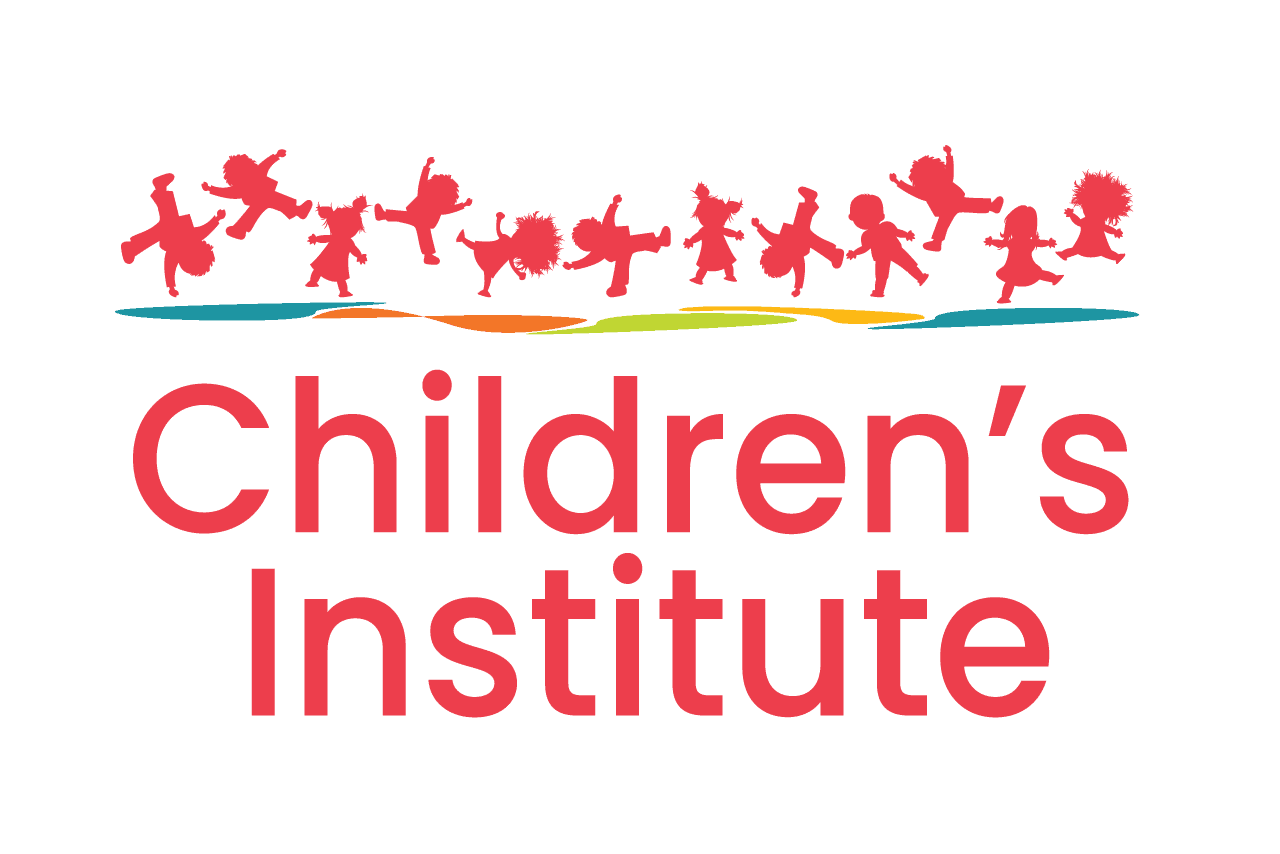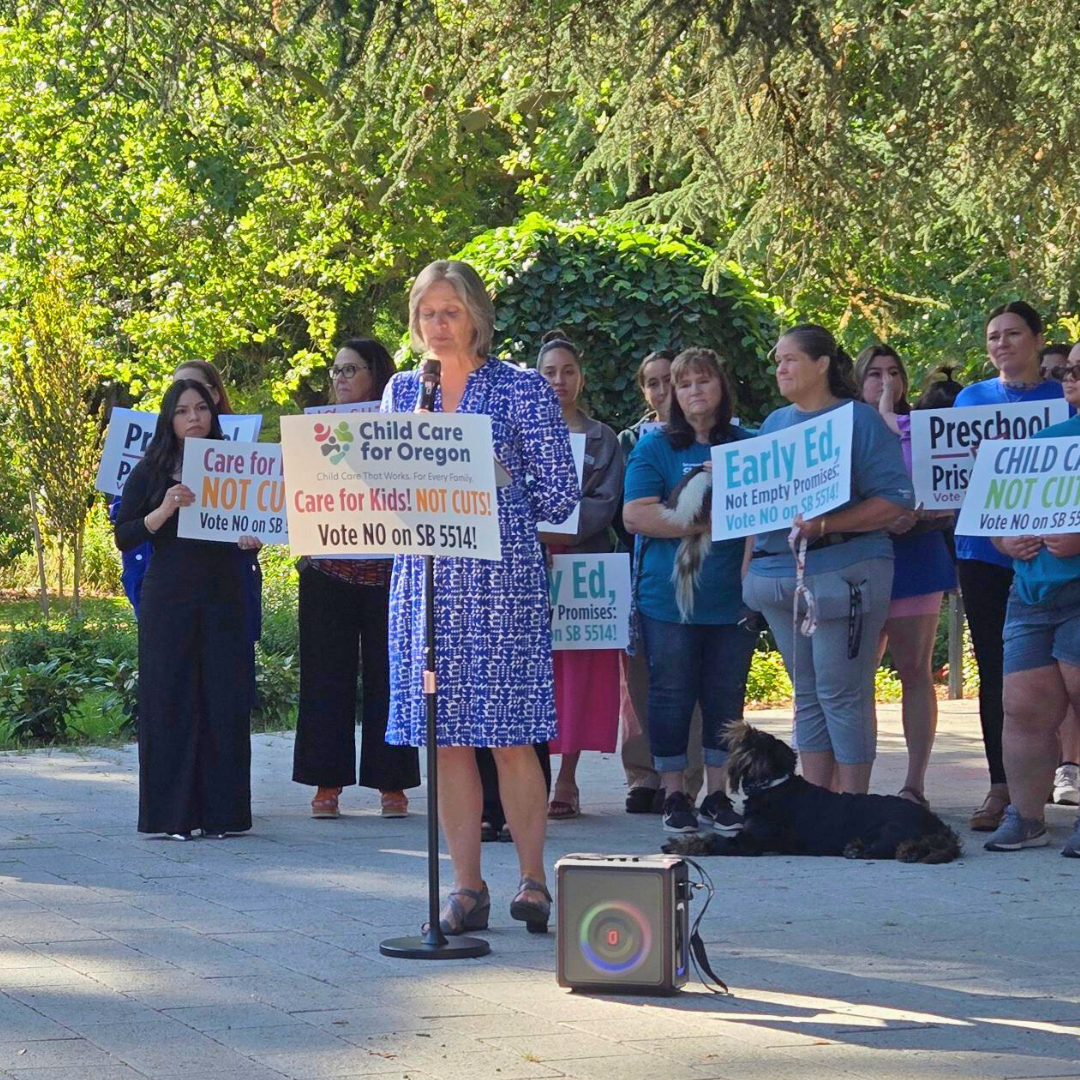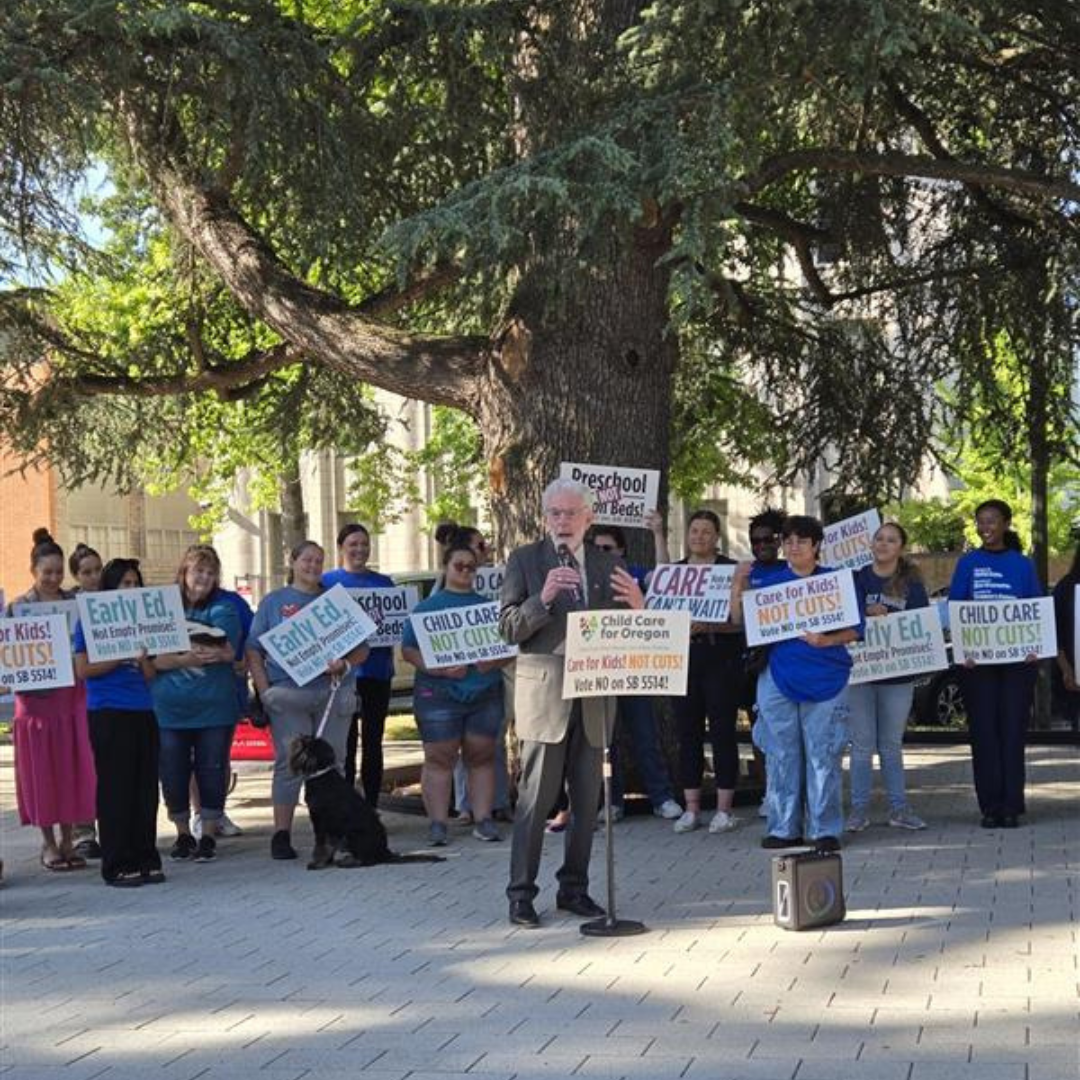On Tuesday, a broad coalition of parents, early childhood educators, and advocates gathered at Escuela Viva in Southeast Portland to speak out in support of Preschool for All in Multnomah County—a nationally recognized, voter-approved model for universal preschool.

Advocacy organizations, parents, and early learning and care providers gathered at Escuela Viva in support of Multnomah County Preschool for All on Tuesday, June 24. 2025. Photo: Chris Hagan Photography
The gathering was a response to Oregon lawmakers’ last-minute changes to Senate Bill 106, seeking to eliminate Preschool for All by 2027 despite broad voter approval of the initiative in Multnomah County.
The amendments to SB 106 were posted on the Oregon Legislature’s website late Monday night without public notice—just days before sine die, the official end of the legislative session when no further action can be taken on bills.
Advocates came together to protect Preschool for All because they believe in supporting local, equity-driven solutions to the child care crisis. Rather than engaging in a thoughtful conversation about tax collection, there was an attempt to dismantle the program entirely—a move that reinforces the importance of ongoing community engagement and discussion.
Many Portlanders agreed. Some estimate that legislators received up to 5000 emails/calls protesting this effort. Their voices were heard. The county preschool program appears to be safe for now, with the bill not advancing out of committee.
Oregon children have the right to an early education, regardless of their race, family income, or zip code. Lydia Gray-Hollifield, a Portland parent and former preschool worker, highlighted the difficult choices many families face when trying to access child care.
“No mother should have to choose between rent and child care, but that is the reality for so many of us. Hands off Preschool for All,” she said.

Lydia-Gray Hollifield, a parent and former preschool worker. Photo: Chris Hagan Photography.
While all families who need child care benefit from universal preschool, Preschool for All invests directly in lower-income families with young children, creating a more equitable system and delivering real results—while supporting a stable workforce and sustainable business economy.
The program currently funds over 130 providers—many of them culturally specific or home-based—and will serve nearly 4,000 children in the 2025-2026 school year, an increase from 2,225 from the year before.
At a time when the federal government is actively eliminating funding for early learning programs, Oregon lawmakers have a responsibility to protect the few investments that exist, especially community-driven solutions that expand access to preschool, and support the healthy development and long-term success of children and families.
Tuesday’s gathering was a testament to the coordinated efforts among early childhood advocates, parents, and early learning and care providers who continue to show up for Oregon’s young children and speak up in support of community-designed solutions.
“This is one of the best investments we can make in our current economy and in our future,” said Dr. Bahia Overton, Executive Director of Black Parent Initiative. “It’s a program created by the local community to better serve our entire community. We ask the Governor to honor the dreams and vision of Multnomah County voters.”

Dr. Bahia Overton, executive director of Black Parent Initiative, speaks at a gathering of early childhood advocates, parents, and providers on Tuesday, June 24, 2025. Photo: Chris Hagan Photography.
Children’s Institute will continue to track this issue at the state level in the coming months, during the legislative interim and in the 2026 legislative short session.
Organizations represented at Tuesday’s event included: Family Forward Oregon, Latino Network, Black Parent Initiative, APANO, Unite Oregon, Friends of Preschool for All, Children’s Institute, Oregon Food Bank, ILWU Local 5, Oregon Working Families Party, Portland DSA–Family Agenda Campaign, and Portland for All.











